QuestionMy poor horse has been lame for months, here's a very brief history - he's been barefoot for two years, has only been in light work on roads, stony/muddy tracks (I have used hoofboots as he struggled if ridden on tracks more than once a week) and groundwork and ridden in the field. He lives out and is fed Allen & Page Calm & Condition.
Since the beginning of April Storm has been on and off unsound, has regularly been galloping around his field and through electric tape, the lameness initially appeared to be in his left shoulder, and when checked by our Sacral Cranial Healer his leap in the air when she touched it confirmed this!, otherwise in good shape and shoulder pain disappeared as also confirmed by McTimoney chiropractor.
By this time he was clearly unsound to near fore, and his feet were too long at the toe. This went on until the middle of May when he appeared sound again, but then 10th June Vet visit, as lame near fore, followed by trip to vet hospital lots of trotting endlessly in circles, clearly lame, nerve blocks to coffin joint shows slight improvment, nerve blocks to heels 100% sound, x-rays to investigate pedal bone, coffin joint, navicular syndrome showed relatively flat pedal bone and lots of toe.
19th June Farrier and vet meet, x-rays and types of shoe and future care of horse and previous experiences discussed, general view that horses with flat feet and without shoes don't work, decision by committee, compromises all round, quick trim to start to reduce the toe and bring the heels up, first catrophen injection.
26th June Farrier on vet's recommendation puts on Epona egg bar shoes with pads and dentists' impression, vet x-rays and confirmed pedal bone is better position, cartrophen injection.
By the 23rd July he was still lame AND he had over reached and pulled of his off fore shoe. He has been successfully confined in over reach boots to 20 to 40 foot diameter paddocks with four strands of electrified rope with NO opportunity to gallop for a fortnight, but is still lame. He has been checked by the chiropractor as I was concerned he over reached because of shoulder/ back problems, but fortunately all OK, feet in better shape.
I am currently seeking a second opinion from another equestrian vet as to diagnosis and treatment in the hope this second one has a good understanding of barefoot horses who live out, as my vet is convinced medicating the coffin joint and shoeing is the only way forward, and without any knowledge myself I am going to have to follow his advice as I can't leave my horse any longer, although my gut instinct tells me this isn't right.
Do you have any advice please?
Thanks
Kate
AnswerThanks Kate!
Since I am not a vet and can of course only advice from remote, could you possibly send me photos of his hooves before he got the therapeutic shoes, and after and pics of X-rays and video of your horse being lame...basically whatever you have that I can look to see whether I am qualified to even suggest an opinion.
Can you also tell me more about your horse? How old, how long have you had him, what did he used to do before you got him, what are your plans for him, what kind of riding do you want to do? what is his breed, height, weight, is he usually active or quiet, how much feed do you give him and what else does he eat, etc.....Has your veterinarian ruled out laminitis? Whatever additional info you can add would be great. You can E-mail pics and things to me at jnksize@comcast.net.
One thing I can already agree with is that unfortunately, in many cases you will hear from vets that horses MUST have shoes to work on hoof issues and that you are not given the opportunity to address things barefoot. This is often because you can adjust angles and manipulate the weight bearing surface for a leg rapidly with shoes to provide hopefully "immediate" relief (and in some cases that is indeed critical) but for chronic lameness that is not improving more long term measures may be needed and this is where I am not sure shoes and joint injections are always the most appropriate option. However, keep in mind that in many, many cases horse owners, riders and trainers expect vets and farriers to return the horse to soundness as fast as possible and many "techniques" and approaches are based on this. Sometimes options change if you are not in a rush, the horse does not have to return to work quickly but can be laid up and you are more interested in figuring out the cause of the lameness and see how it can removed or stopped from getting worse, or get a realistic assessment on what types of work the horse can do in the future if an irreversible condition exists.
I would be very happy to discuss this with you further, but please remember, I am NOT a vet and therefore can only give you info on options that might be out there but you have to pick the best ones, shoes or no shoes together with your vet and farrier....if your gut already tells you you are not happy with the current solution, my advice and options will hopefully get you more comfortable asking detailed questions of these professionals and get a better sense of whether their answer is based on experience, opinion or generic approach to lameness.....
There are already comments from your vet/farrier in your E-mail above that make me think your team is not usually dealing with barefoot working horses....
Looking forward to photos and additional info!
Christine

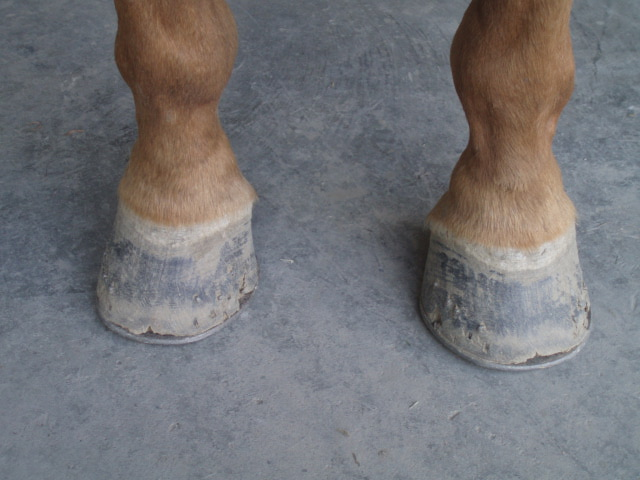 Is this white line?
Questionis this white line
is this white line &n
Is this white line?
Questionis this white line
is this white line &n
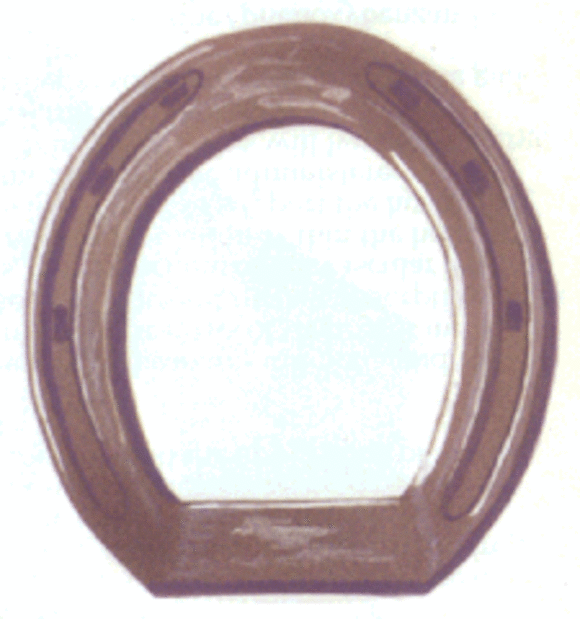 eggbar shoes on horses
Question
bar shoe
hello sir, when can i use egg
eggbar shoes on horses
Question
bar shoe
hello sir, when can i use egg
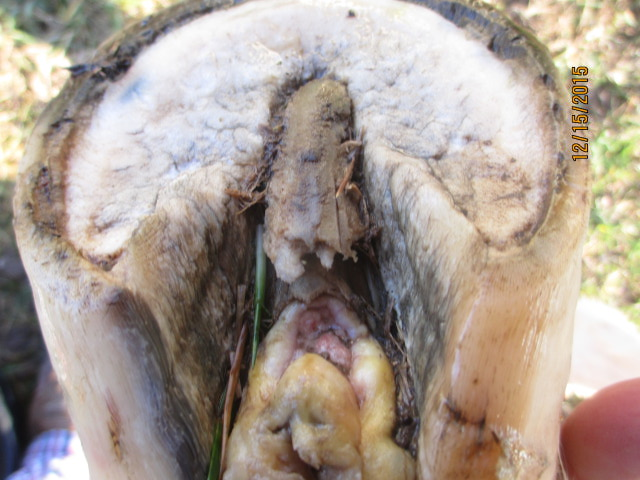 contracted hoof frog is almost gone
Question
frog
I have a paint gelding. I bought h
contracted hoof frog is almost gone
Question
frog
I have a paint gelding. I bought h
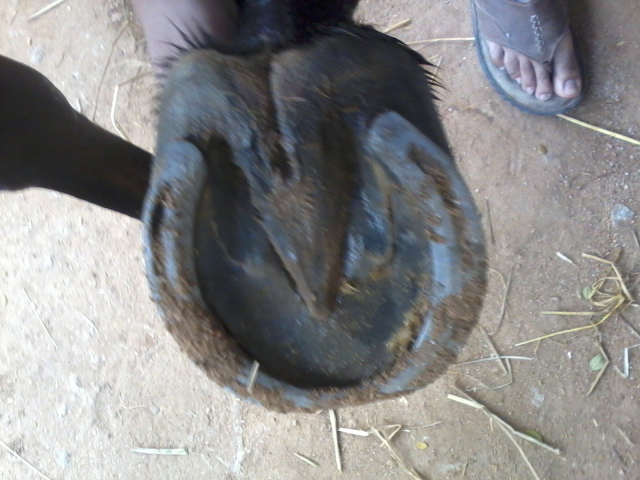 flat or concave sole
Question
flat feet or concaved
hello sir, may i
flat or concave sole
Question
flat feet or concaved
hello sir, may i
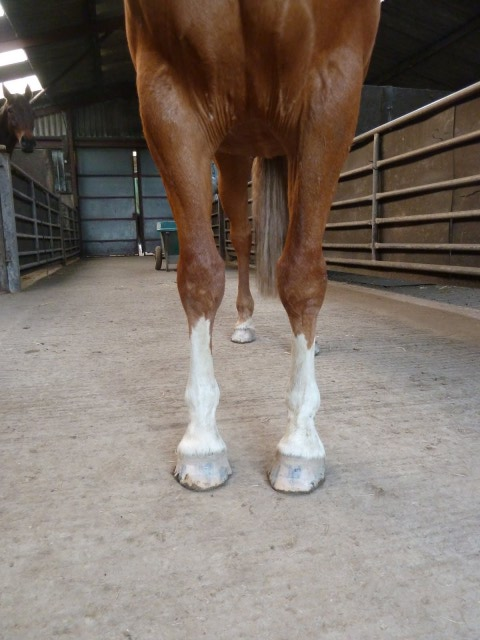 horse with flat feet with thin sole
Questionhorse with flat feet w
QUESTION: hello,
horse with flat feet with thin sole
Questionhorse with flat feet w
QUESTION: hello,